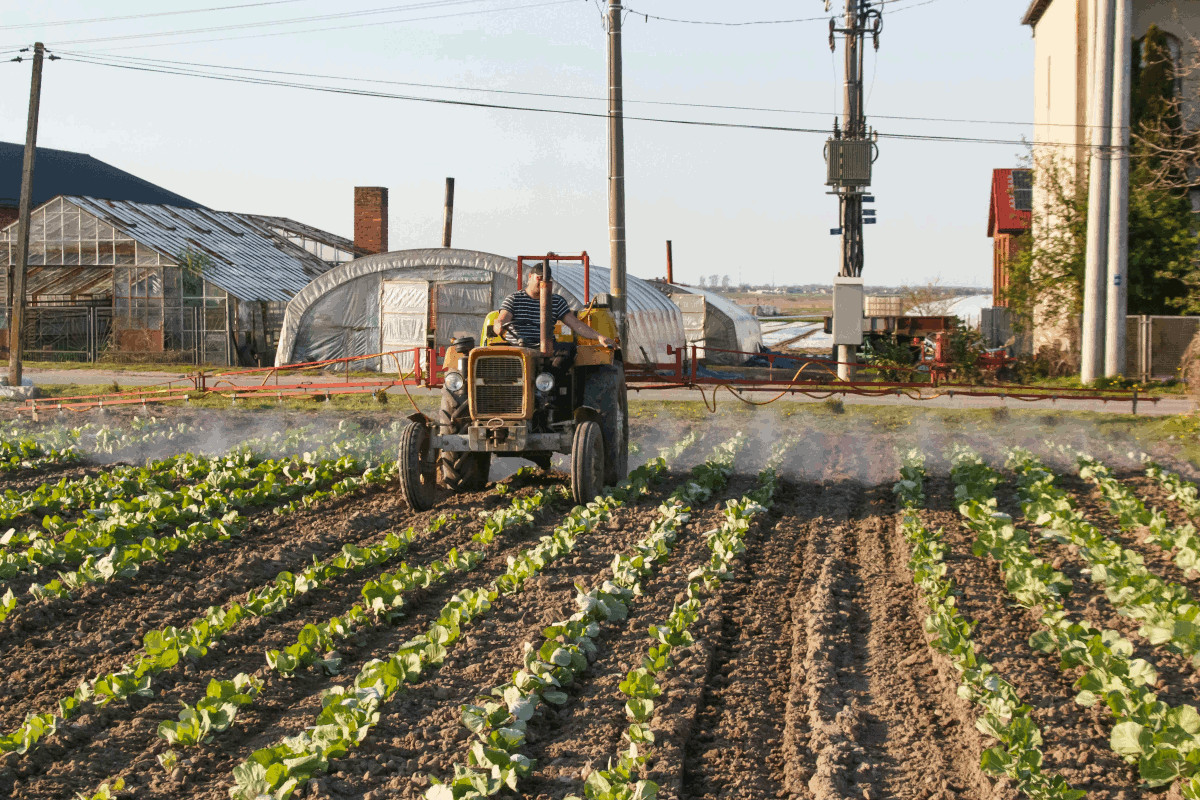Where Did It All Go Wrong?
Our plants are dependent on a very diverse soil biology, a mixture of viruses, bacteria, protozoa, fungi and other small organisms with tens of thousands of known species.
Since the 1950s changes in farming have depleted the diversity of our soil biology, resulting in plants with lower resistance against disease and lower nutritional value.
Modern agriculture has revolutionised food production, enabling us to meet the demands of growing populations and feed millions across the globe. However, this success has come with an unintentional critical downside: the nutritional value of the crops we rely on has significantly decreased. Even in developed countries, where food security is often taken for granted, people are increasingly consuming food that is grown in a manner that is high-yield but nutrient and mineral poor. This is contributing to a range of health issues for people.
How Does This Affect Us?
These farming changes have caused the nutritional value of our food to drop dramatically compared to 70 years ago, and with that our health has suffered accordingly.
At the current rate of decline, we run a serious risk of being unable to produce enough affordable healthy food and human health will continue to plummet.
The Nutritional Decline of Crops
A number of studies have shown that the nutritional and mineral value of crops are dependent on multiple aspects of the soil and choice of plants. These include the soil’s mineral diversity, genetic makeup of the plant, microbial diversity in the soil and the ripeness of the plant when harvested.
Modern agriculture relies on chemical means to suppress the rising susceptibility to disease of crops to achieve higher yields. This is not sustainable and does not ensure the continued availability of crops that have the nutrient and mineral density needed for the health of our society.
A recent study from Washington State University (2022)1Montgomery DR, Biklé A, Archuleta R, Brown P, Jordan J. Soil health and nutrient density: preliminary comparison of regenerative and conventional farming. PeerJ. 2022;10:e12848. doi:https://doi.org/10.7717/peerj.12848 confirmed that farms employing regenerative agricultural practices—such as crop rotation and organic fertilisation—produced food which is significantly more nutrient-dense compared to food that is conventionally farmed.
Health Consequences in Developed Countries
In developed nations, where food abundance is rarely questioned, the impact of nutrient decline is somewhat hidden. People may consume enough calories or even overconsume them, but still suffer from deficiencies in essential nutrients. This paradox is contributing to modern health epidemics such as obesity, type 2 diabetes, and cardiovascular diseases. A 2003 report by the Institute of Nutrition and Food Hygiene in Cuba2Díaz JR, de las Cagigas A, Rodríguez R. Micronutrient deficiencies in developing and affluent countries. Eur J Clin Nutr. 2003;57 Suppl 1:S70-S72. doi:10.1038/sj.ejcn.1601820 highlights that micronutrient deficiencies are more widespread than commonly believed, even in affluent countries.
Take, for instance, the rise in conditions like anaemia caused by iron deficiency. While food is abundant in developed countries, the iron content of staple crops such as wheat and rice has significantly diminished3Cheung YL, Zheng B, Rehman Y, Zheng ZYJ, Rangan A. Iron Content of Wheat and Rice in Australia: A Scoping Review. Foods. 2024;13(4):547. Published 2024 Feb 10. doi:10.3390/foods13040547 , making it more challenging for people to meet their daily nutritional needs without supplementation or fortified foods. Similarly, declining levels of magnesium and zinc in vegetables and grains are linked to an increased prevalence of chronic illnesses.
Addressing the Problem
The good news is that solutions exist. Regenerative agriculture, which focuses on restoring soil health by improving biodiversity, has shown promise in reversing nutrient decline. The future of agriculture is and always has been in the soil and soil biology.
Fixing the problem doesn’t need to be difficult, we just need to stop destroying our soils and start building it up instead. Nurturing soil biology has been shown to have remarkable effects even from the first crop and can be done easily both in the garden and at scale.
Conclusion
The nutritional decline of crops due to modern farming practices is a pressing but solvable issue. While the focus has historically been on ensuring sufficient food supply, it is equally vital to prioritise the quality of that food. By shifting toward agricultural methods that value nutrition alongside yield, we can tackle the hidden epidemic of nutrient deficiencies that is affecting the modern world.
- 1Montgomery DR, Biklé A, Archuleta R, Brown P, Jordan J. Soil health and nutrient density: preliminary comparison of regenerative and conventional farming. PeerJ. 2022;10:e12848. doi:https://doi.org/10.7717/peerj.12848
- 2Díaz JR, de las Cagigas A, Rodríguez R. Micronutrient deficiencies in developing and affluent countries. Eur J Clin Nutr. 2003;57 Suppl 1:S70-S72. doi:10.1038/sj.ejcn.1601820
- 3Cheung YL, Zheng B, Rehman Y, Zheng ZYJ, Rangan A. Iron Content of Wheat and Rice in Australia: A Scoping Review. Foods. 2024;13(4):547. Published 2024 Feb 10. doi:10.3390/foods13040547

